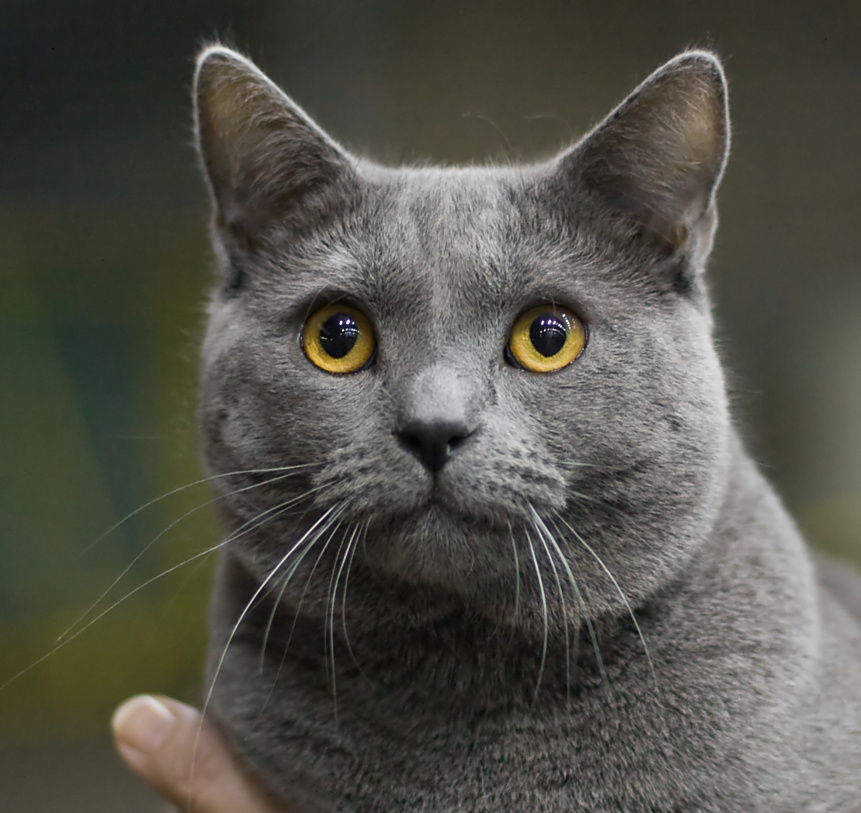John K. Rosembert

The Chartreux is a French breed and is said to date to the 18th century and perhaps earlier. One of the tales of his origin is that the cats were bred by Carthusian monks. No doubt they helped to keep the monasteries free of mice and rats. Unfortunately for them, people also liked them for their pelts. Chartreux made their debut into cat society in 1931 at a cat show in Europe.
In 1970, the first Chartreux were imported to the United States. The Cat Fanciers Association gave the breed full recognition in 1987. The Chartreux has a short and thick waterproof coat that is blue (grey). The eyes are orange, the head is round, and the cheeks full. This cat breed looks like he is smiling. The ears are medium-sized, the chest broad, and the legs are relatively short and fine-boned. The paws are medium-sized. The tail is heavy at the base, but flexible.
The Chartreux is sweet and quiet with a gentle, amenable nature. He enjoys being a lap cat and is the ultimate television-watching pal. When a lap isn’t available he follows his people wherever they go. Throw a ball for him to chase, or be amazed by his acrobatics when you dangle a fishing-pole toy for his entertainment. The Chartreux chirps when he wants your attention but is otherwise quiet.
Gentle he may be, but the Chartreux is also playful and intelligent. Challenge his brain and keep him interested in life by teaching him tricks and providing him with puzzle toys that will reward him with kibble or treats when he learns how to manipulate them.
The Chartreux is a healthy and moderately active cat breed that may be susceptible to the following health conditions:
- Hip Dysplasia: This is rare in domestic cats, and is common in purebred cats. This occurs when the hip joint is loose, and leads to degenerative joint disease (osteoarthritis). Symptoms include lameness that can be mild to severe. Cats generally need no surgery for hip dysplasia. Weight reduction can help reduce discomfort.
- Ringworm: This is an infection of the skin, hair, or claws, and is caused by a fungus called dermatophyte. This occurs in 98% of cats. It spreads easily from cats to people. Symptoms include circular, bald patches that scale and have broken hairs in a ring-like fashion. Consult with your veterinarian for advice
- Gingivitis: This is when the gums become inflamed due to bacterial plaque. At this stage the ligaments and bone are not infected. Gum color in cats will change from a light pink to red or purple. The gum edge wills well. Symptoms include bleeding and bad breath. This can be reversed with proper teeth cleaning. That said, it can worsen and result in periodontitis. Consult with your veterinarian for an effective treatment plan.
Sources:
https://petonbed.com/chartreux/
http://www.vetstreet.com/cats/chartreux#health
Photo credit:

